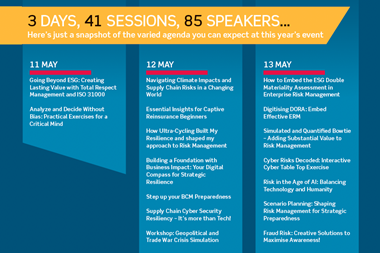Crisis leadership, brand management and risk management essays
Crisis Leadership Now
‘A real-world guide to preparing for threats, disaster, sabotage and scandal’
By Laurence Barton
McGraw Hill (2008)
From across the Atlantic comes this amiable manual to help you prevent the modern versions of the four horsemen of the apocalypse from bursting through the doors of your business and consuming everything therein. From a European perspective, as I have suggested in a previous review of a book from the US, much of what Barton has to say about crisis management is – or certainly ought to be – received wisdom on this side of the Atlantic. Whether this is because European business has suffered more from threats, disaster, sabotage and scandal than America, or whether a more intrusive regulatory environment has forced it to take crisis management more seriously, is open to argument.
There are some good things in this book – plenty of case studies for a start, which are always instructive – and an excellent chapter on managing threats and workplace violence, which includes the sobering quotation that ‘Some companies quite innocently recruit individuals with psychopathic tendencies because some hiring managers may mistakenly attribute “leadership” labels to what are, in actuality, psychopathic behaviours.’ That one rings true – and the book tells you what to do about it.
It also extends the advice that during a ‘separation discussion’ all objects that could be used during a moment of anger should be cleared from the room, and that separation discussions should last no more than seven minutes. To be fair, the author adduces excellent reasons for this advice.
At the end of the book is a 40 page crisis management plan, which is useful as a check list against your own plan, and useful as a base for building your own if, by some extraordinary oversight, you do not yet have one.
Brand Risk
‘Adding Risk Literacy to Brand Management’
By David Abrahams
Gower (2008)
This book has the interesting aim of teaching marketers about risk on the grounds that ‘risk taking is what marketers do’, and that to be literate in the theory and practice of managing risk ought to be an essential part of their trade. In actuality, Abrahams has gone somewhat further than this expressed aim. His detailed and lovingly considered exposition provides a clear and useful grounding in many aspects of risk management. While his attention is always on the brand and the market, there is much that could be extrapolated into other areas of the risk manager’s life. So, this is not just a book to keep beneath your desk to be handed to the first person from marketing to evince any enthusiasm; it is a book which will repay reading, however hoary and experienced a risk professional you may be.
There is much detail – well illustrated by diagrams – on everything from the language of risk to risk mapping and modelling. If there is a criticism, it is perhaps that the target audience of the marketer who wishes to become risk literate (but perhaps not a risk expert) may be overwhelmed. There may be a case for a follow-up, simplified version, going easy on the mathematics and the modelling until the concept has been sold.
Among the wealth of good things here, it is difficult to know what to pick out. There is a clear introductory chapter on Defining Brand Risk – itself of great use to any manager. Risk professionals might think the chapter on The Language of Risk would be old hat, but the clarity of the explanation is such that most people will benefit from reading it. In the chapter on modelling risks, we plunge into complexity - but, as the author points out, ‘the evidence is that difficult forecasting decisions based solely on holistic judgement are unreliable’ – hence the need for the quantitative analysis.
Finally, the author has provided a useful set of schematic chapter maps (it would have been nice to have had them at the start of the book rather than tucked away in an appendix) which allow readers to find their way instantly to any section of especial interest.
The Fantods of Risk
Essays on Risk Management
By H Felix Kloman
Xlibris (2008)
In contrast to the other two books reviewed here, this is not a risk manual, but a gentle and literate peroration in 16 chapters around the general theme of risk and how to control it. Kloman may be remembered by some readers for his lecture on Risk Management and Monty Python, and his collection of essays contains much of the same quirky, perceptive thinking. Most of these essays are not much longer than a few hundred words, making the book ideal for a read in the train or over the lunchtime sandwich.
There’s plenty of stimulus to thought here. How we tend to disregard the ‘imperceptible’ creeping risks, such as global warming. How a risk officer ought to be in a position to convince a board of the long-term downside effects on reputation of excessive executive pay (I am reminded of the widely reported comment of the shareholder who challenged the board of the Royal Bank of Scotland with: ‘You are paid as you were super-human, but you are not’). Nor does Kloman avoid potentially controversial subjects, such as: can risk management take advantage of innate differences between men and women?, while his words on the insurance industry ‘balks at risk, unstable, poorly managed, losing out to competition’ and on insurance buyers: ‘over-focus on insurance, have missed service opportunities, are married to their vendors...’ may provoke apoplexy in certain readers.
Certainly well worth having on your shelf.




















No comments yet